Microfilter Allows Non-invasive Diagnosis Of Fetal Abnormalities

Microfilter allows non-invasive diagnosis of fetal abnormalities
A new method could allow physicians to diagnose fetal genetic abnormalities during pregnancy without the risks involved in current techniques.
A team of scientists at the Agency for Science, Technology and Research (A*STAR) Institute of Microelectronics (IME) has fabricated a microchip that can filter fetal red blood cells from the mother’s circulation. Retrieving these isolated fetal cells could allow the early diagnosis of fetal genetic abnormalities.
The technique, which would require drawing only a few millilitres of blood from an expecting mother, could be used from the eighth week of pregnancy; earlier than current prenatal diagnostic procedures.
More Posts from Llamaslikesciencetoo and Others

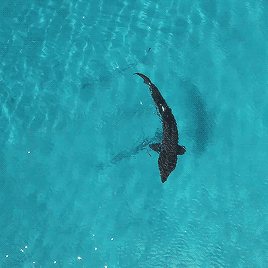
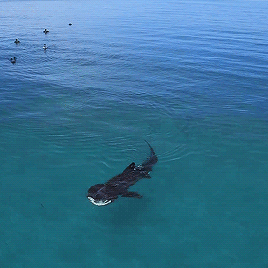
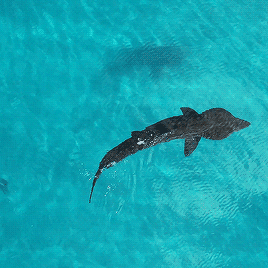
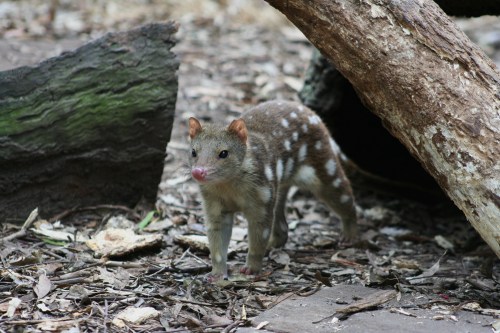
Quoll Returns to the Australian Mainland After 50 Years
On March 1st, Fourteen eastern quolls were released into Australia’s mainland to rebuild their population because of a team’s effort from Australian National University. Since the 1770′s, quoll numbers have been declining due to many dangers such as habitat loss and predators that include foxes, wild dogs, and cats.
The quoll is carnivorous and feeds on smaller mammals, small birds, lizards, and insects. Until now, it has inhabited inland parts of Australia. There are six current species(pictured is the tiger quoll). The larger of which live longer than the smaller, with an average life span of two to five years.
So, whats the point of this translocation? Well, quolls are important to the functioning of the mainland ecosystem where they regulate the prey species. The released quolls will have radio tracking collars to be monitored.
Fact about the quoll: Male and female quolls only meet for mating, and male den territories often overlap female territories. However, they have communal toilets where they may have up to 100 droppings in them.
Photo by: joshua cunningham via Flickr

Sawfish sharks,of the order (Pristiformes) of rays characterized by a long, narrow, flattened rostrum, or nose extension, lined with sharp transverse teeth, arranged so as to resemble a saw. All species of sawfish are endangered or critically endangered due to over fishing or habitat loss.

The dancers of the sea | Peter Chadwick

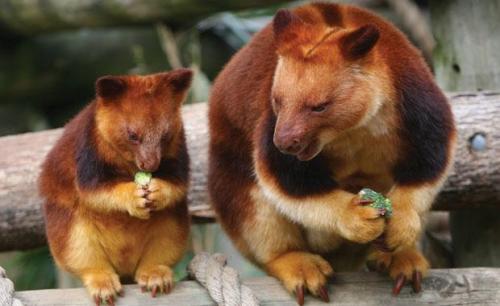
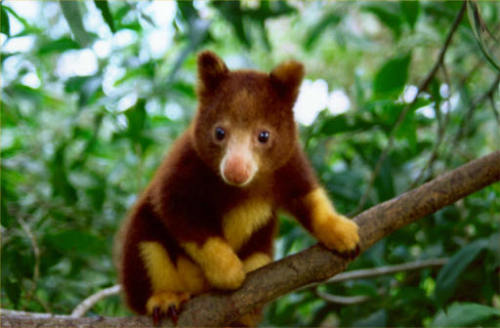
(Fact Source)
Follow Ultrafacts for more facts

I always get really…touchy, when someone says they want to go into marine biology for the whales. I admire their love for the ocean and the mammals living within it, but I also get frustrated with their naivety. A degree doesn’t guarantee any kind of field work.
In fact, it’s a hell of lot of work to be able to do any kind of field work, and even less likely for it to be marine mammal related. I spent one semester on marine mammals. Just 16 weeks, and half the experiences I had with strandings and training and dissections came with my location and pure happenstance.
Marine biology isn’t whales. It’s becoming a statistician with a deeply routed knowledge on marine ecosytems and processes. I didn’t spend four years working through the blood, sweat, and tears for this degree to listen to someone complain about not being able to pet a dolphin when they graduate.

Just some lesser known facts about octopuses you guys might like.


Ancient ‘otter bear’ may have popped clams off rocks like a bottle opener
By Sid Perkins
A creature that roamed the coasts of the Pacific Northwest about 20 million years ago may have had a feeding style like no other mammal, a new study suggests.
Kolponomos is known only from two bearlike skulls, jawbones, and some toe bones found a few decades ago, so scientists aren’t sure where it fits on the carnivore family tree or even what it really looked like (one artist’s idea is seen above).
Rather than having cheek teeth that could shear meat, as many carnivores do, Kolponomos’s molars were similar to the flattened, low-crowned teeth that otters use to crush their shelled prey—yet the creature lived long before anything similar to modern-day otters evolved.
Now, a new analysis using the same sort of computer software that engineers employ to analyze bridges and aircraft parts suggests that Kolponomos may have collected its shelly prey in a unique way…
(read more: Science Magazine/AAAS)
illustration by Roman Uchytel

TheStare by © wildernessprints.com
Wild adult lynx in Banff National Park
-
 coeurdeclaude reblogged this · 8 years ago
coeurdeclaude reblogged this · 8 years ago -
 cutesonrisa liked this · 8 years ago
cutesonrisa liked this · 8 years ago -
 studyingwithgiraffes liked this · 8 years ago
studyingwithgiraffes liked this · 8 years ago -
 tealcicada-sideblog reblogged this · 8 years ago
tealcicada-sideblog reblogged this · 8 years ago -
 tealcicada-sideblog liked this · 8 years ago
tealcicada-sideblog liked this · 8 years ago -
 neigeunderfireworks88 liked this · 8 years ago
neigeunderfireworks88 liked this · 8 years ago -
 obsidii reblogged this · 8 years ago
obsidii reblogged this · 8 years ago -
 gvrlmeat liked this · 8 years ago
gvrlmeat liked this · 8 years ago -
 littletimes332 liked this · 8 years ago
littletimes332 liked this · 8 years ago -
 peregrxnans reblogged this · 8 years ago
peregrxnans reblogged this · 8 years ago -
 ineedlotsofhugs liked this · 8 years ago
ineedlotsofhugs liked this · 8 years ago -
 aestheticbun-blog liked this · 8 years ago
aestheticbun-blog liked this · 8 years ago -
 zeldahime reblogged this · 8 years ago
zeldahime reblogged this · 8 years ago -
 lilbluehedgeh0g liked this · 8 years ago
lilbluehedgeh0g liked this · 8 years ago -
 quillowl reblogged this · 8 years ago
quillowl reblogged this · 8 years ago -
 miracufic reblogged this · 8 years ago
miracufic reblogged this · 8 years ago -
 germfreeadulthood liked this · 8 years ago
germfreeadulthood liked this · 8 years ago -
 nikkisimona reblogged this · 8 years ago
nikkisimona reblogged this · 8 years ago -
 yellowgrowngreen reblogged this · 8 years ago
yellowgrowngreen reblogged this · 8 years ago -
 not-your-emergency reblogged this · 8 years ago
not-your-emergency reblogged this · 8 years ago -
 itsbenrealfolks liked this · 8 years ago
itsbenrealfolks liked this · 8 years ago -
 pseudoblr liked this · 9 years ago
pseudoblr liked this · 9 years ago -
 ponchihart liked this · 9 years ago
ponchihart liked this · 9 years ago -
 thecutestofbuttons reblogged this · 9 years ago
thecutestofbuttons reblogged this · 9 years ago -
 ossified-hypothesis reblogged this · 9 years ago
ossified-hypothesis reblogged this · 9 years ago -
 ossified-hypothesis liked this · 9 years ago
ossified-hypothesis liked this · 9 years ago -
 fat4summer liked this · 9 years ago
fat4summer liked this · 9 years ago -
 shelleygindahouse liked this · 9 years ago
shelleygindahouse liked this · 9 years ago -
 x-fly-like-pegasus-x liked this · 9 years ago
x-fly-like-pegasus-x liked this · 9 years ago -
 formermousetrap liked this · 9 years ago
formermousetrap liked this · 9 years ago -
 rosemew liked this · 9 years ago
rosemew liked this · 9 years ago -
 queer-omens-in-the-archives liked this · 9 years ago
queer-omens-in-the-archives liked this · 9 years ago -
 4glass liked this · 9 years ago
4glass liked this · 9 years ago -
 love-will-be-your-muse liked this · 9 years ago
love-will-be-your-muse liked this · 9 years ago -
 academicaimee reblogged this · 9 years ago
academicaimee reblogged this · 9 years ago -
 nurseemi-blog liked this · 9 years ago
nurseemi-blog liked this · 9 years ago -
 ihopemymomneverfindsthis-blog liked this · 9 years ago
ihopemymomneverfindsthis-blog liked this · 9 years ago -
 mairecollections reblogged this · 9 years ago
mairecollections reblogged this · 9 years ago -
 mairecollections liked this · 9 years ago
mairecollections liked this · 9 years ago -
 bergdorfbandit liked this · 9 years ago
bergdorfbandit liked this · 9 years ago
Mainly interested in ecology, but also the entirety of science.
179 posts